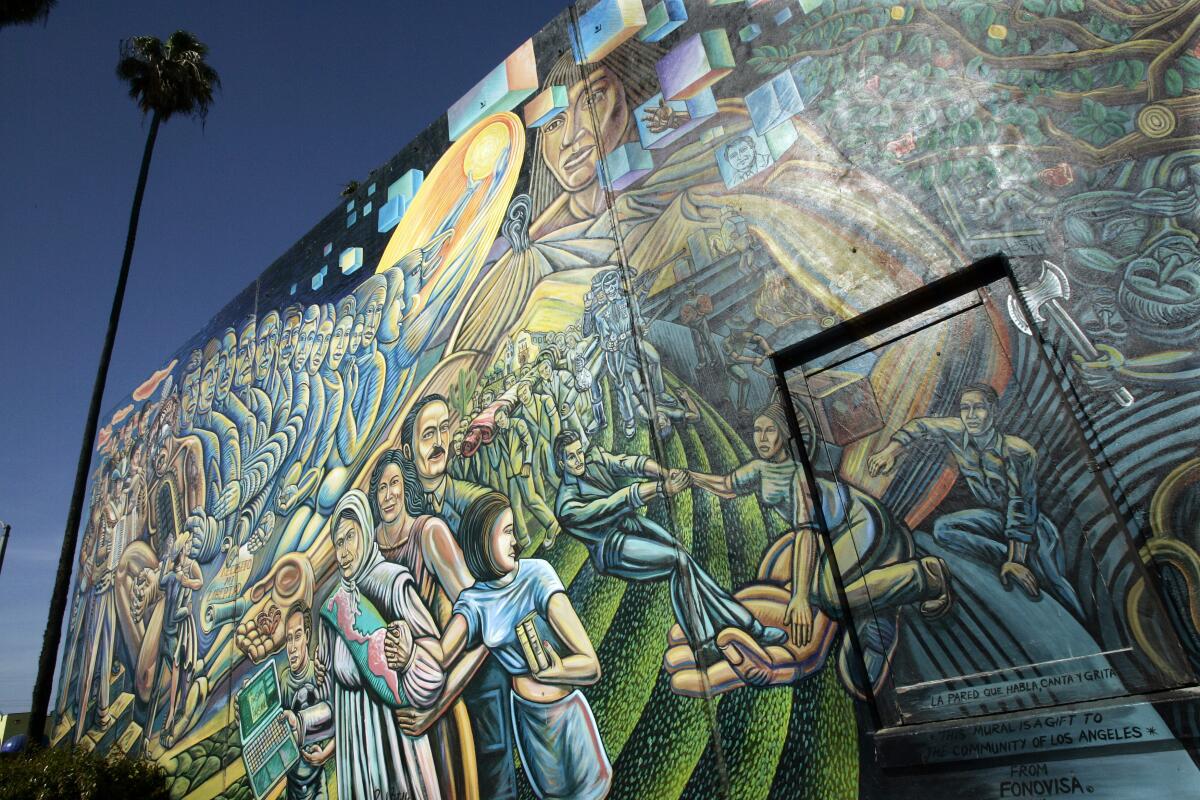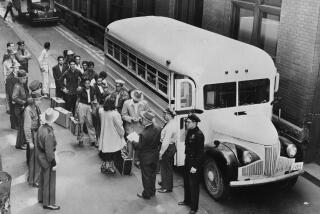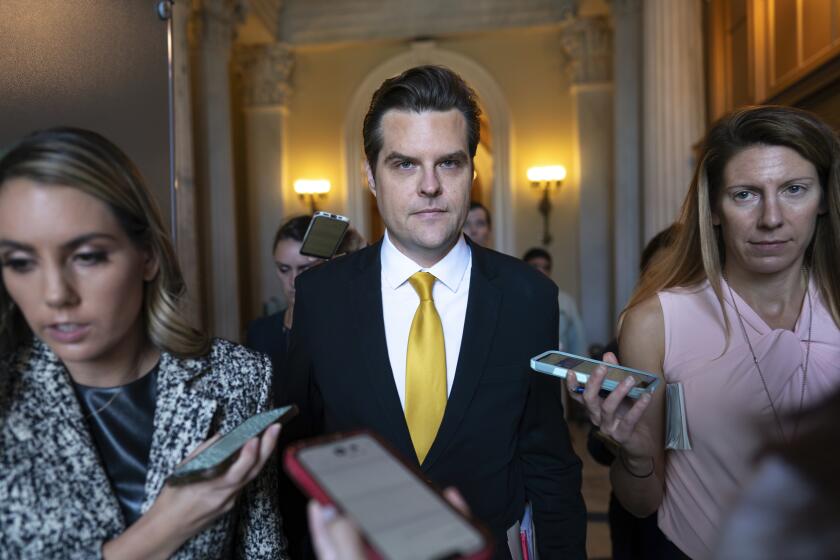Op-Ed: What Americans donât know about Latino history could fill a museum

On Thursday, Sen. Mike Lee (R-Utah) blocked a bipartisan congressional effort to establish a new Smithsonian National Museum of the American Latino, declaring that âthe last thing we need is to further divide an already divided nation with an array of segregated, separate-but-equal museums for hyphenated identity groups.â
Warning of the dangers of a new Latino history museum, he accused its supporters of ascribing to a âso-called critical theoryâ that âweaponizes diversity,â that âsharpens all those hyphens into so many knives and daggers,â and turns âcollege campuses into grievance pageants and loose Orwellian mobs.â
Leeâs exaggerations sidestepped every available fact about Latinos in the United States. They caricatured the views of the museumâs supporters, including historians, museum professionals, community leaders and business executives. He was the only senator to oppose a bill embraced by a majority in the House and Senate (including most of the California congressional delegation), President-elect Joe Biden and the Smithsonianâs leadership. President Trump is expected to sign the bill if it lands on his desk.
We have heard this kind of thing before â the view that fully recognizing the importance and primacy of the histories of Americans of color is automatically seen as divisive. An adjunct of that idea is that public institutions should promote a single message like ideological epoxy. But museums of history should neither be monuments to timeless truths nor ideological glue sticks. They should be educational and research institutions, equipped to present truths and complexity about the past and present.
Unfortunately, ignorance of the history of Latinos in America â from the development of the West to the cultural and economic contributions of Mexican Americans, Puerto Ricans, Central Americans, Dominicans and other Latinos â is widespread. And that ignorance affects how we understand, or fail to understand, Latino communities in the present day.
A new national museum would be able to tackle this complex narrative under one roof. It may not be able to present every aspect of this vast history, but it could greatly expand public understanding of a central part of this countryâs heritage.
It could address the legacy of colonial histories from the 16th century forward, including patterns of violence and settlement, the work of governors, missionaries, soldiers and traders, in places such as Florida, the Carolinas, Texas, New Mexico, Arizona and California.
It could present a new look at American military history, tracing Hispanic involvement during and after the American Revolution. It could show visitors the roles of Latino workers, entrepreneurs, and businesspeople in shaping the economy of every region in the United States â including Los Angeles, New York, St. Louis, Houston, Miami, the Yakima Valley of Washington and the San Joaquin Valley of California, to name a few.
Most Americans have little understanding of the struggles for justice and freedom of Latino people since the mid-19th century, or of the efforts of Latino labor organizers, journalists, business leaders, immigrant rights activists, free speech advocates, and in recent decades, LGBTQ organizations, to protect the rights of their communities. A national museum could collect and present that history in ways accessible for a general audience. And of course, it would be able to display the persistent influence of Latino cultures on American food, music, literature, visual arts, film and social media.
Despite Mike Leeâs criticism, this would not be a âseparate but equalâ facility, but one that gives all Americans a more accurate and dynamic understanding of Latino history, including its many contradictions. Several weeks ago, I wrote a letter, signed by 210 Latino historians, to the Senate, advocating for the creation of a âpolyphonicâ museum that represents many perspectives and experiences and traces our history from the past five centuries into the contemporary moment.
The overwhelming majority of Congress recognize that Latino history has for too long been dismissed or hidden from public view. There are so many stories to tell; an institution focused exclusively on this mission would be able to archive, interpret and preserve these narratives over time.
So, letâs move beyond the foolishness of Leeâs objections. The dream of building an institution dedicated to Latino American history goes back to 1994, when a report castigated the Smithsonian for its âwillful neglectâ of Latinos in the United States. Congress should pass the National Museum of the American Latino Act immediately to ensure that we devote the right attention to these American communities.
Stephen Pitti is a professor of history, American Studies, and Ethnicity, Race and Migration at Yale University. He is a former chair of the National Historic Landmarks Committee of the National Park Service. @latinohistory
More to Read
A cure for the common opinion
Get thought-provoking perspectives with our weekly newsletter.
You may occasionally receive promotional content from the Los Angeles Times.










